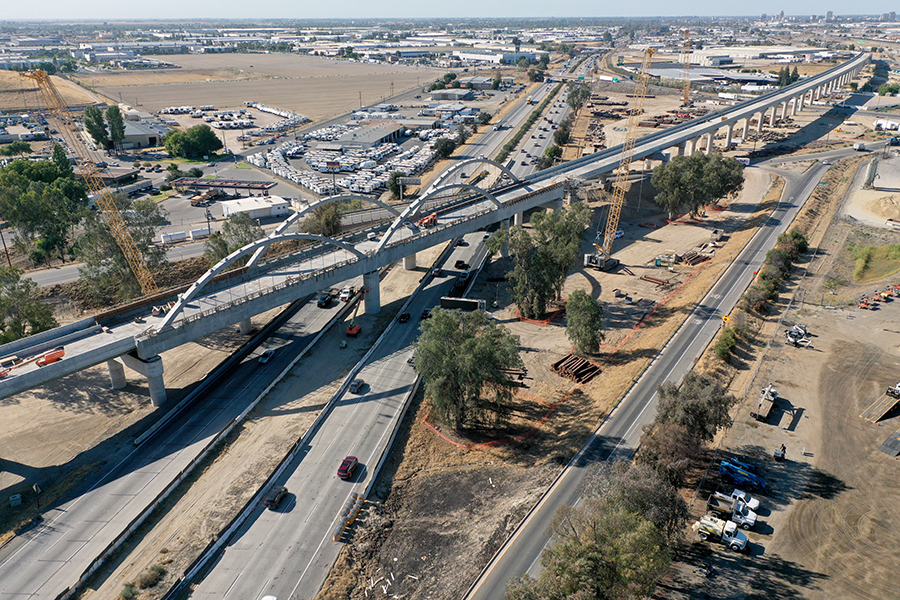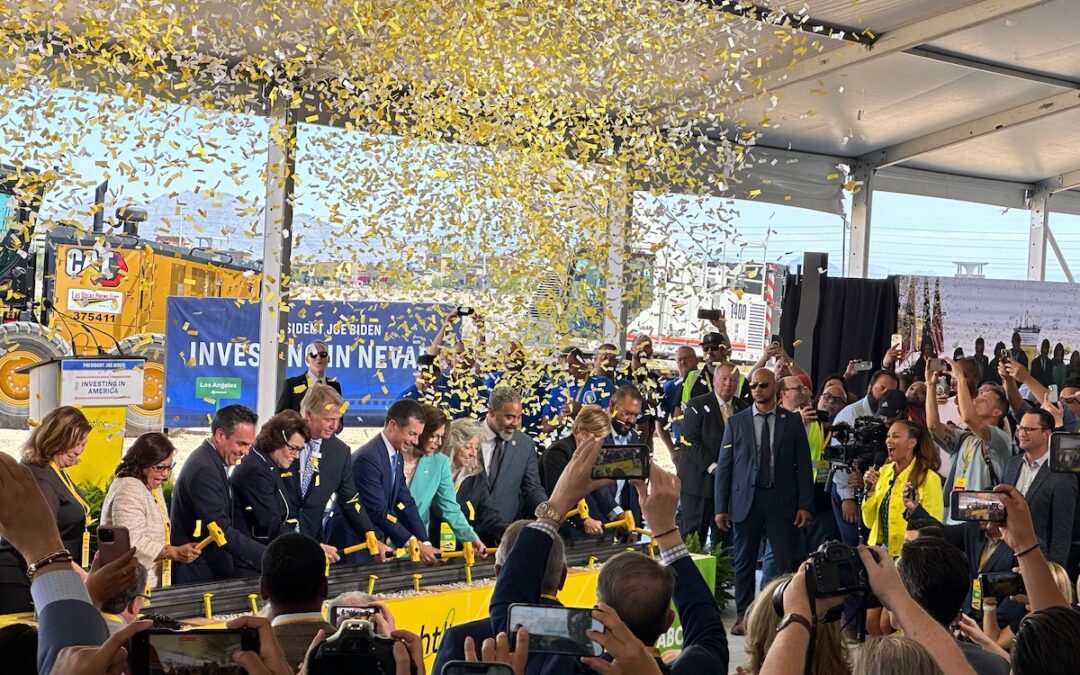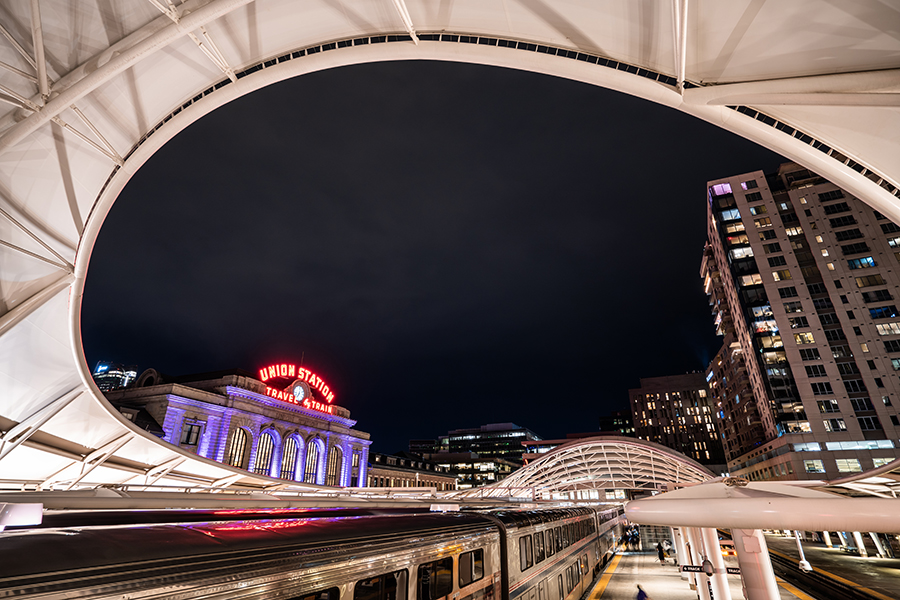The railroad Brightline today broke ground in Nevada on its new Brightline West project. Brightline will use trains traveling up to 200 miles per hour to cut the travel time between Las Vegas and Los Angeles in half. The company already operates successful trains...

The 3,700 foot Cedar Viaduct in the Central Valley. Photo: California High-Speed Rail Authority
A guest post from Chris Jones
Challenging Convention: High Speed Rail and How It Can Transform California
Everything in our daily lives was once a new concept that challenged the status quo. One such concept was internal combustion, which replaced eons of using animal power and later steam to get around. The coming of the automobile and better roads brought a new kind of speed and mobility that had never been experienced before. In America, the building of the Interstate highways expanded this mobility even further and helped cement car culture as an American institution.
Much was the case for most of the world following the Second World War, as older methods made way for cars and highways. One such victim was train travel, which through years of neglect and increasingly stiff competition simply couldn’t keep up. That is until 1964 when Japan introduced the Shinkansen, a train unlike any ever seen before. Running at 130 miles per hour, it slashed travel times and ushered in a high speed rail revolution. Today over twenty countries have high speed trains running at speeds of up to 200 miles per hour, carrying tens of millions of people annually. Just as the car did for the 20th century, high speed rail is doing for the 21st with a new, fast and comfortable way to travel.
America has continued to fall woefully behind much of the world in intercity travel. Freeways, once touted as the future of mobility, are now oversaturated with cars while our airports become increasingly crowded. Travel between California’s two largest population centers, the Los Angeles Basin and San Francisco Bay Area, is currently limited to a six-hour drive without traffic, an 80-minute flight not including navigating the airports, and a nine-and-a-half-hour train and bus ride. In 2008, California voters were presented with a better alternative.
When voters approved Proposition 1A, it greenlit the construction of a high speed rail line to connect San Francisco and Los Angeles in under three hours at speeds of up to 220 miles per hour. The initial goal was to begin service in 2020 for a total cost of around $40 billion. Fast forward to today, three years past that date and a budget now nearly three times that. Construction began in 2015 on 119 miles in the Central Valley, with miles of guideway and multiple structures completed and many more to go. This initial segment will be extended to existing transit in the cities of Merced and Bakersfield to provide an interim statewide service while construction continues to San Francisco and later Los Angeles. The California High Speed Rail Authority anticipates interim service to begin at the end of 2030 with no determined date beyond that for reaching SF or LA, as any further construction is dependent on funding.
Prop 1A allocated just $9 billion to get the high speed rail project started, while the remaining funds would come from state, federal, and private sources. As of now the project has up to $25.2 billion available, of which $10 billion has been spent, despite certain news outlets spouting otherwise. CAHSR’s recent 2023 Progress Report shows $35.3 billion total will be needed to complete the Central Valley segment, which includes tracks, stations and trains. They hope to receive additional funding from the 2021 Bipartisan Infrastructure Bill totaling $8 billion, with an additional $2 billion needed to get a high speed train service operational. According to CAHSR, the cost increases have to do with several factors including inflation, increased risk contingency, and refining all necessary project components, as well as lasting supply chain issues from the COVID-19 pandemic.
Naysayers argue what’s happening now no longer meets what was first promised, but I would argue that it still is. Construction of an SF to LA high speed rail line had to start somewhere, and the Central Valley was chosen for a number of reasons. If HSR had started in the Bay Area or Southern California, it would have left out the other half of the state. Having the initial segment link transit in both halves enables more people to experience high speed rail sooner.
Shutting down the project now would do much more harm than good. All the construction and disruptions that have occurred so far would be for nothing, as would the billions of dollars already spent. All the finished HSR structures would sit unused, monuments to what could have been. Our dependence on cars and air travel would only increase, and continuing to expand our freeways and airports is a finite solution. The world has proved high speed rail works, and we are building a high speed rail line now. Let’s finish what’s been started so far, get it to transit in Merced and Bakersfield to create a viable travel option, and go from there. Completing the Central Valley segment gives high speed rail a foothold and gets high speed trains running as early as possible, allowing Americans to start experiencing what they’ve been missing.
The highest impact parts of the entire project will be getting across the Pacheco and Tehachapi Passes, and the miles of tunneling that’ll require. It can only happen with tens of billions of dollars more in funding, but once that’s done high speed rail will be able to reach SF via the shared Caltrain corridor and connect with Metrolink in Palmdale, and be set up to complete its final leg into LA and Anaheim. Ideally that’ll happen before the end of the 2030s, but there’s no guarantee of that unless we keep pushing to make it happen. High speed rail has the potential to transform California, just as it can for America and has across the world, if only we have the courage to challenge convention and see it through. Otherwise, we’ll continue to get left further behind.
About the Author
Chris Jones is an advocate for high speed rail and better public transportation. He resides in Irvine, California and has been a railfan since he can remember, namely from exploring the various rail lines around Southern California. While his passions may lie more in the history and preservation of the trains of yesteryear, he does have a fascination with the fast-paced modern freight and passenger trains of today, and especially the concept of high speed rail.
The Latest from HSRA
Our Latest Blog Posts
Check out the latest news, updates, and high speed rail insights from our blog!



